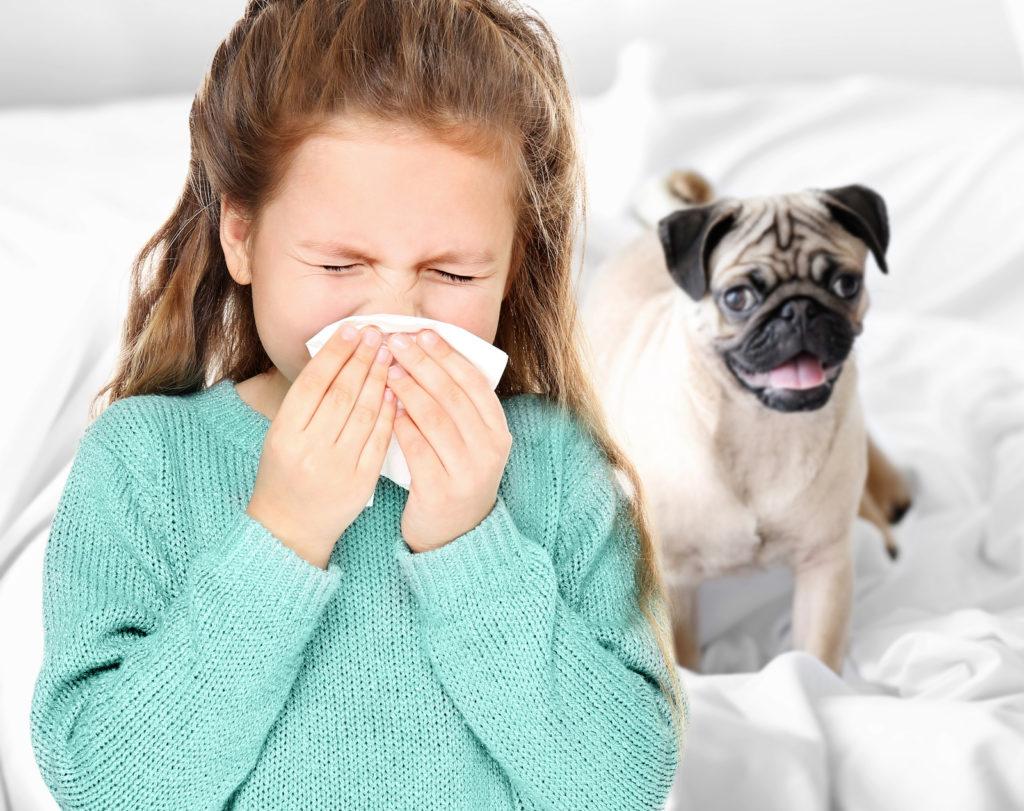How Pets Impact Indoor Air Quality — And Ways to Improve It
Learn how your pet might be impacting your air — and what to do about it.
About two-thirds of all U.S. households include a pet: More than 63 million with one or more dogs and almost 43 million with cats. On the plus side, our furry family members entertain us with their antics, snuggle on the couch, and play endless games of fetch. On the not-so-plus side, they also have an impact on our home’s floors, furniture, and indoor air quality.
For starters, having a four-legged friend almost always involves extra cleaning chores. In a Trane Residential survey of 2,006 U.S. pet owners conducted in March 2021, 3 out of 4 said that getting a pet prompted them to clean their home more than ever before. (The average amount of time spent cleaning each year? 832 hours!) Preventive maintenance can help keep things neat, with nearly two-thirds of respondents saying they always clean Fido or Fifi’s fur or paws before they’re allowed back inside.
Indoor Air Quality and Pet Dander Allergy
In addition to tracking in dirt and shedding messy hair, pets also present a challenge for people with allergies. According to the Asthma and Allergy Foundation of America (AAFA), as many as three in 10 people with allergies have allergic reactions to cats and dogs. In fact, nearly half of the Trane survey respondents said they have been diagnosed with pet allergies by a medical professional. Not only would they rather put up with the symptoms than get rid of Rover, here’s how committed they are:
- 45% are willing to deal with sneezing;
- 28% are willing to suffer from a rash; and
- 31% would endure muscle aches…
…just to have some extra time with their furry friends!
Vacuuming alone may not be enough to reduce your pet’s impact on air quality. Pet dander is composed of tiny flakes of skin, and is often accompanied by saliva that triggers allergy symptoms. While fur is usually easy to spot, pet dander is so small that it can remain suspended in the air column and circulate throughout your home. Removing pet dander can be key to reducing pet allergy symptoms.
How to decrease an indoor pet’s impact on your environment and indoor air quality
The truth is, though, that being a pet owner with allergies doesn’t have to mean resigning yourself to suffering — or switching to a fish or reptile that’s not really suitable for cuddling. The AAFA offers several handy suggestions to reduce your family’s exposure to pet dander and other allergens:
- Remove your pet from the bedroom and clean the area aggressively.
- Because animal allergens are sticky, it’s important to scrub surfaces clean and keep your home uncluttered.
- Bare floors and walls are easiest, and you can wash throw rugs in hot water; low-pile carpets are better than thicker options, and frequent steam cleaning can help.
- When you’re vacuuming, wear a dust mask; even better, use a vacuum with an AAFA-certified asthma & allergy-friendly® filter.
- If you’ve had prolonged exposure to an animal, change your clothes.
Most importantly, AAFA suggests adding an air cleaner. Central forced air systems keep our homes comfy, but they also have the potential to transport air particulates. To ensure that your indoor air is as free of pet dander as possible, Trane offers a few different solutions. If your heating and cooling system is compatible, a Trane Quikbox Air Cleaner may be a good fit for improving indoor air quality. Equipped with a MERV 11 filter, Quikbox has a high-efficiency removal rate that’s up to 20 times more effective than a standard 1” filter.
For the next step up in air cleaning effectiveness, the Trane CleanEffects Whole-Home Air Cleaner removes up to 99.98% of all airborne particles — including pet dander and other allergens, mold spores, bacteria, viruses, pollens, and more — without overly restricting airflow to your home. It’s 8 times more effective than even the best HEPA room filters and up to 100 times more effective than a standard 1-inch filter. In addition to being certified as asthma & allergy friendly® by the Asthma and Allergy Foundation of America, CleanEffects is easy to clean and doesn’t require any costly replacement filters.
Unfortunately, washing your pet regularly only has a temporary effect in removing airborne allergens. But make the effort to take some or all of the steps above, and you’ll be able to enjoy more exposure to your fur baby — without worrying quite so much about sneezing, itchy eyes, and other allergy symptoms.



